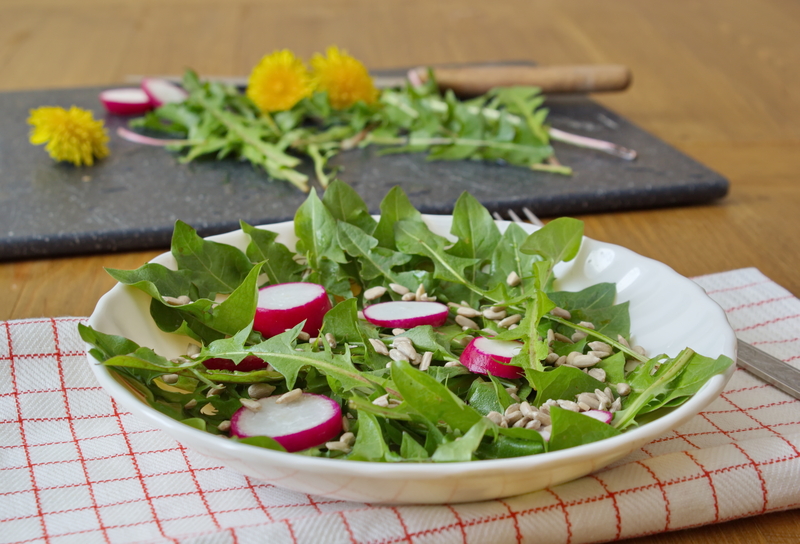Gardening's Contribution to a Stable Climate
Posted on 23/09/2025
Gardening's Contribution to a Stable Climate: An In-Depth Look
Gardening goes far beyond beautifying our surroundings and fostering a love for nature. Its impact stretches much further, reaching into the health of our planet itself. As climate change continues to pose severe threats to ecosystems and communities worldwide, it becomes crucial to examine how individual and collective actions can foster a healthier, more stable climate. One such action is cultivating a garden. In this comprehensive guide, we'll explore how gardening contributes positively to climate stability, the mechanisms involved, and how you can leverage your own gardening practices for the greatest environmental benefit.

How Does Gardening Influence Climate Stability?
At its core, gardening's contribution to a stable climate arises from its ability to sequester carbon, foster biodiversity, enhance soil health, and reduce urban heat. When multiplied across millions of gardens worldwide, these effects become significant in the ongoing battle to stabilize our climate.
1. Carbon Sequestration Through Plants
Plants are natural carbon captors. Through photosynthesis, they absorb atmospheric carbon dioxide (CO2) and store it as biomass (in leaves, stems, roots). Here's how gardening helps climate change mitigation via carbon sequestration:
- Trees and Shrubs: Planting trees and shrubs in gardens captures more carbon, as they store plenty of it in their wood for decades.
- Perennial Plants: Unlike annuals, perennials live for years, continuously sequestering carbon and minimizing soil disturbance that releases carbon.
- Lawn Alternatives: Replacing traditional lawns with native plant beds or wildflower meadows enhances carbon storage.
Fact: A single mature tree can absorb up to 48 pounds of carbon dioxide per year.
2. Improving Soil Health and Carbon Storage
Healthy soil is a powerful ally in climate stabilization. Soils are one of the largest carbon reservoirs on earth! Gardens encourage practices that promote soil health:
- Composting: Transforming kitchen and garden waste into compost reduces methane emissions from landfills and increases organic matter in soil, boosting its carbon storage capacity.
- Mulching: Covering the soil with organic matter prevents erosion, reduces water loss, and adds more carbon-rich material back to the earth.
- Low till or No-till Practices: Minimizes soil disturbance, which keeps stored carbon locked underground for longer periods.
Gardening for climate resilience also keeps soil fertile, which is crucial for continued plant growth and further carbon drawdown.
3. Biodiversity and Ecosystem Services
Biodiversity-rich gardens support a variety of insects, birds, and animals, all of which create resilient local ecosystems. These rich systems are more adaptable to changing climatic conditions and can help buffer against climate extremes.
- Pollinator Gardens: Grow native flowering plants to support bees, butterflies, moths, and other pollinators vital for food security and ecological health.
- Pest Control: Biodiverse gardens often house natural pest predators, reducing the reliance on chemical pesticides, which contribute to greenhouse gas emissions during production and application.
- Habitat Creation: Planting a mix of shrubs, grasses, and trees provides habitats, nesting sites, and food sources for various species.
4. Mitigating Urban Heat Island Effect
Urban areas tend to be much hotter than rural areas due to extensive concrete and asphalt surfaces. Gardens play a key role in cooling these urban "heat islands" in the following ways:
- Evapotranspiration: Plants naturally release moisture during transpiration, which cools surrounding air.
- Shade Creation: Garden trees and shrubs provide shade, lowering surface temperatures and reducing energy consumption for air conditioning.
Climate-friendly gardening practices not only cool neighborhoods but also improve air quality by filtering out pollutants.
5. Reducing Household Carbon Footprint
Eco-conscious gardening often involves growing your own food, thus reducing the need for long-distance transport ("food miles") and energy-intensive packaging. Here's how personal gardens help climate stability:
- Home-grown Produce: Every fruit or vegetable harvested at home means less fossil fuel used for transportation to your kitchen.
- Less Plastic Waste: Home gardening cuts back on store-bought packaging, especially single-use plastics.
- Minimal Pesticides: Personal gardens typically use fewer synthetic chemicals, which have carbon-intensive manufacturing processes.
Practical Steps: Gardening for a Stable Climate
If you're inspired to use your garden as a tool for climate stabilization, the following practical steps will maximize your positive climate impact:
1. Choose Climate-Resilient and Native Plants
Native species are already adapted to local climates and soil, requiring less water, fertilizer, and care. They generally thrive despite heatwaves or unseasonal rain--a boon for creating a garden that is both beautiful and climate-resilient.
- Research which native plants thrive best in your region.
- Incorporate a mix of trees, shrubs, and wildflowers for maximum biodiversity.
2. Practice Water Conservation
Gardeners can reduce water use (and related energy) by:
- Using mulch to retain soil moisture and reduce evaporation.
- Installing a rain barrel to collect and use rainwater for irrigation.
- Setting up drip irrigation instead of sprinklers to target plant roots directly.
3. Compost and Mulch Regularly
Turning kitchen and garden waste into nutrient-rich compost not only diverts organic material from landfills (where it would rot and release methane, a potent greenhouse gas), but it also enriches the soil and enhances its carbon-storing abilities. Mulching keeps soils cool, locks in moisture, and reduces weed growth--contributing to a more sustainable climate.
4. Reduce Reliance on Chemical Inputs
Chemical fertilizers and pesticides are energy-intensive to manufacture and can harm beneficial soil microbes. Opt for organic gardening methods:
- Use natural fertilizers, like compost or aged manure.
- Encourage beneficial predatory insects by planting a wide variety of flowers and herbs.
- Rotate crops and integrate cover crops to build soil fertility naturally.
5. Plant Trees Strategically
Trees provide long-term climate benefits by sequestering carbon, shading buildings, and nurturing wildlife. To maximize benefits:
- Plant trees on the south and west sides of your home to shade and cool structures during the summer months.
- Group trees and shrubs together for mini "forest" effects, boosting biodiversity and carbon sequestration.
- Choose native or climate-adapted tree species whenever possible.
Community and Urban Gardens: Scaling Up Climate Impact
While individual gardens are impactful, collective gardening efforts--such as community gardens, urban farms, school gardens, and public green spaces--can transform cities. These larger scale projects:
- Improve city-wide air quality and reduce urban heat.
- Provide local food, reducing carbon emissions from transportation and packaging.
- Create wildlife corridors and bolster urban biodiversity.
- Engage communities in sustainable practices and climate education.
Tip: Join or start a local gardening group to amplify your climate impact and inspire others in your neighborhood.
The Importance of Climate-Friendly Gardening Practices
As more people recognize gardening's role in climate stability, eco-friendly techniques are gaining popularity. Some trends making headlines include:
- Permaculture: Designing gardens that mimic natural ecosystems, maximizing carbon storage and biodiversity.
- Regenerative Gardening: Going beyond sustainability to actively restore degraded soils and landscapes, locking away even more carbon.
- Edible Forest Gardens: Combining trees, shrubs, and perennial vegetables to create multi-layered, carbon-sequestering food systems.
- Organic Gardening: Reducing or eliminating synthetic chemicals for healthier soil and planet.
Challenges and Opportunities
While gardening for a stable climate offers many benefits, there are challenges to maximize its impact:
- Monoculture Lawns: Traditional grass lawns contribute little to biodiversity or carbon storage. Replacing portions with native beds or edible gardens can help.
- Access: Not everyone has access to land for gardening. Community gardens and rooftop gardens expand participation.
- Education Gaps: More public awareness is needed about the link between gardening and climate.
All these are opportunities for growth--both literally and figuratively. By making informed choices, gardeners can be powerful allies in fighting climate change and fostering global climate stability.

Looking Ahead: Gardening as a Climate Solution
The next decade is critical for tackling climate change. As governments and industry work on systemic solutions, it's crucial for individuals to take meaningful action at home and in their communities. Gardeners are uniquely positioned to lead by example, showing how small parcels of land, when managed thoughtfully, can collectively have a huge climate benefit.
Gardening's contribution to a stable climate is not simply the act of growing plants, but the art and science of restoring ecological balance, nurturing living soil, supporting wildlife, and cultivating a resilient future for all.
Conclusion: Cultivating Hope Through Gardening
Gardening may seem modest in the face of global challenges, but its cumulative power should not be underestimated. Each garden--whether a window box, backyard oasis, or community plot--serves as a carbon sink, habitat, and micro-climate regulator. With millions of gardeners uniting worldwide, their collective actions can significantly advance climate stabilization efforts.
To summarize, gardening supports a stable climate by:
- Absorbing and storing atmospheric carbon.
- Building healthier, carbon-rich soils.
- Enhancing biodiversity and ecosystem resilience.
- Cooling urban spaces and reducing energy demand.
- Reducing greenhouse gas emissions tied to food and lawn maintenance.
By adopting climate-smart gardening practices, each of us can dig a little deeper for the planet--and together, we can help create the conditions for a stable and thriving Earth.
Let's cultivate hope, health, and climate stability--one garden at a time.



